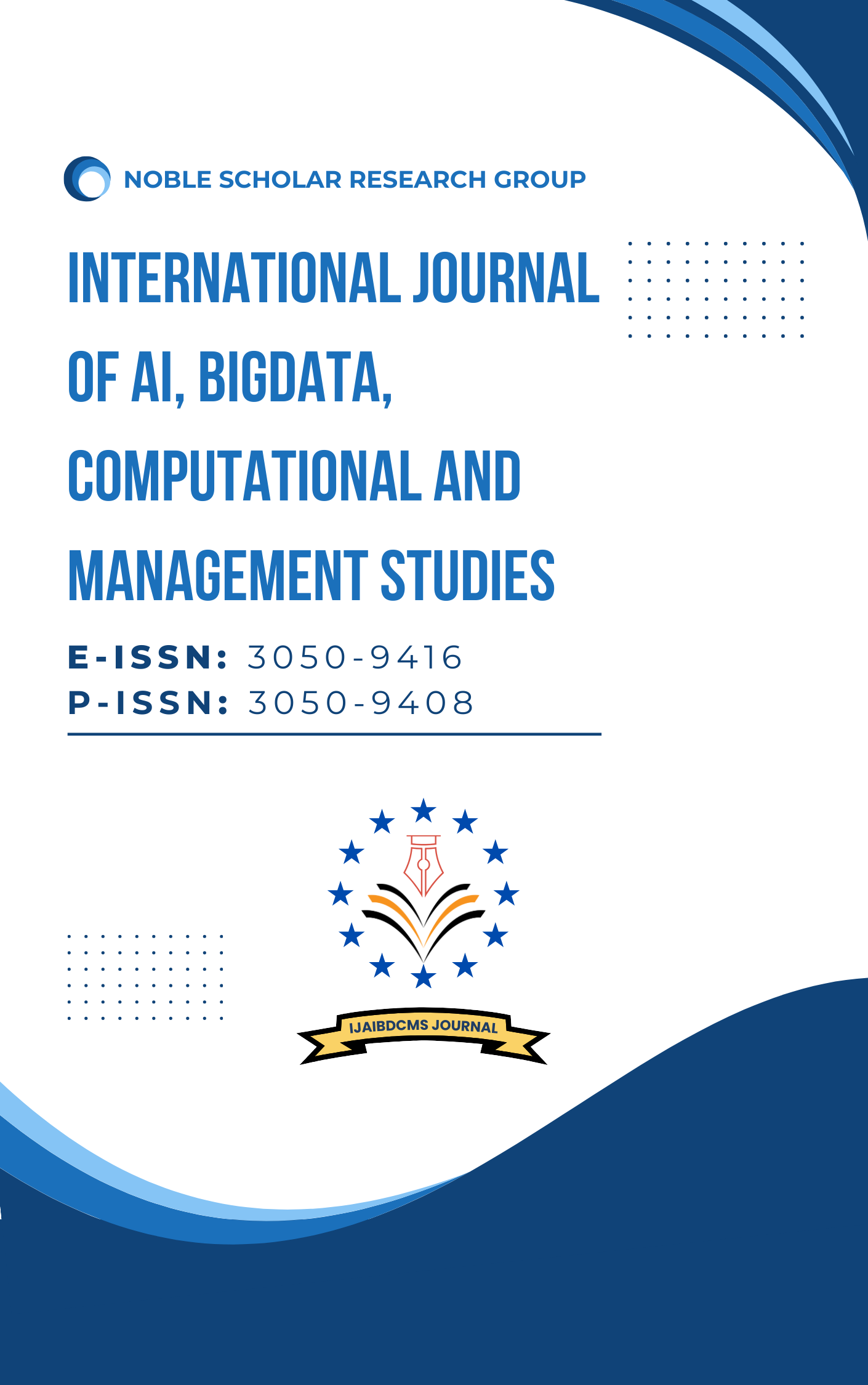Self-Healing Data Pipelines for Handling Anomalies in Medicaid and CHIP Data Processing
DOI:
https://doi.org/10.63282/3050-9416.IJAIBDCMS-V5I2P104Keywords:
Self-healing data pipelines, anomaly detection, Medicaid, CHIP, data quality, data integrity, machine learning, automation, healthcare analytics, ETL pipelines, data governance, data validation, real-time correction, AI-driven data processing, data imputation, record de duplication, statistical outlier detection, workflow automation, HIPAA compliance, CMS guidelines, cloud computing, data reconciliation, healthcare IT infrastructure, anomaly correction mechanisms, scalable data pipelines, fraud detection in healthcareAbstract
Medicaid and the Children's Health Insurance Program (CHIP) are completely reliant on data of a high quality. This is because precise and comprehensive knowledge has a substantial impact on the implementation of policy choices, the distribution of resources, and the treatment of patients. There is a possibility that missing values, mistakes, and anomalies will be formed during the processing of vast amounts of medical data; this will result in the integrity of the data being compromised. There are times when the conventional methods of anomaly diagnosis and repair call for the involvement of a human being. This frequently leads to inefficiencies and slows down the process. Because they automate anomaly discovery, rectification, and validation, self-healing data pipelines are a suitable alternative to consider. Both the amount of human effort that is required and the trustworthiness of the data are improved as a result of this. They provide a valid alternative as a result of this. The processing of data is carried out without any errors by these pipelines, which also result in the identification of problems in real time and the development of solutions to those problems. By utilizing rule-based validation, machine learning, and automatic rollback systems, this objective can be accomplished. These are the means by which it is accomplished. Self-healing systems are able to function without being impacted by changes in the process, to comprehend patterns, and to overcome obstacles in the project when they are provided with continuous data collecting. This method not only enhances the quality and efficiency of data processing, but it also enhances the robustness and scale of the processing of Medicaid and CHIP data. In other words, it is a win-win opportunity
References
[1] Maguluri, Kiran Kumar, Zakera Yasmeen, and Rama Chandra Rao Nampalli. "Big Data Solutions For Mapping Genetic Markers Associated With Lifestyle Diseases." Migration Letters 19.6 (2022): 1188-1204.
[2] Lee, Newton. "Google Versus Death; To Be, Or Not to Be?." Google It: Total Information Awareness (2016): 111-185.
[3] Chellappa, Rama, and Eric Niiler. Can We Trust AI?. JHU Press, 2022.
[4] Sommer, Peter, and Ian Brown. "Reducing systemic cybersecurity risk." Organisation for Economic Cooperation and Development Working Paper No. IFP/WKP/FGS (2011) 3(2011).
[5] Andrews, Lori B. "The shadow health care system: regulation of alternative health care providers." Hous. L. Rev. 32 (1995): 1273.
[6] Caplan, Ronald M. "Medical Terms and Their Meaning: Glossary." The Care of the Older Person. CRC Press, 2022. 292-335.
[7] Hoseini, Cyrus. Leveraging machine learning to identify quality issues in the Medicaid claim adjudication process. Indiana State University, 2020.
[8] Höner, Patrick M. Improving the Processes and Safeguards for Fraud Detection and Prevention in US Medicaid. MS thesis. University of Twente, 2015.
[9] Matschak, Tizian, et al. "Healthcare in Fraudster's Crosshairs: Designing, Implementing and Evaluating a Machine Learning Approach for Anomaly Detection on Medical Prescription Claim Data." PACIS. 2021.
[10] Kemp, James. Unsupervised learning for anomaly detection in Australian medical payment data. Diss. UNSW Sydney, 2023.
[11] Zhang, Joe, et al. "Best practices in the real-world data life cycle." PLOS digital health 1.1 (2022): e0000003.
[12] Shameer, Khader, et al. "Translational bioinformatics in the era of real-time biomedical, health care and wellness data streams." Briefings in bioinformatics 18.1 (2017): 105-124.
[13] Stirbu, Vlad, et al. "Extending SOUP to ML models when designing certified medical systems." 2021 IEEE/ACM 3rd International Workshop on Software Engineering for Healthcare (SEH). IEEE, 2021.
[14] Holland, Sarah, et al. "The dataset nutrition label." Data protection and privacy 12.12 (2020): 1.
[15] Ahmed, I., et al. "Age of first oral health examination and dental treatment needs of Medicaid-enrolled children." JDR Clinical & Translational Research 8.1 (2023): 85-92.



